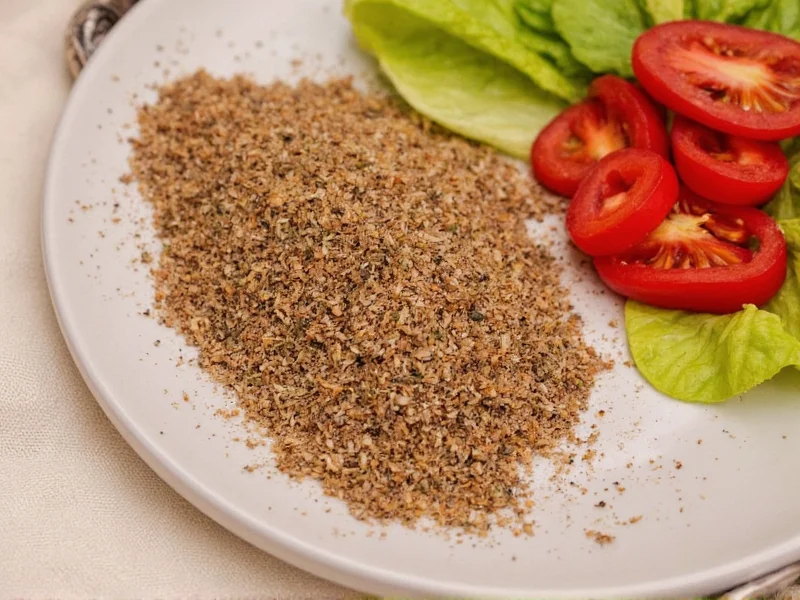Understanding how to properly use Tony's Seasoning can transform ordinary meals into restaurant-quality creations. This popular seasoning blend, rooted in Southern culinary tradition, offers a distinctive flavor profile that works across multiple cooking applications when used thoughtfully.
What Makes Tony's Seasoning Unique
Tony's Seasoning stands out among all-purpose blends due to its carefully balanced combination of garlic, onion, paprika, black pepper, cayenne, and salt. Unlike many generic seasoning mixes, it delivers consistent flavor without excessive sodium or artificial ingredients. The blend's moderate heat level (typically rated 2-3 on a 10-point scale) makes it accessible for most palates while still providing that characteristic Southern kick.
Professional chefs appreciate Tony's for its versatility across cooking methods. Whether you're grilling, roasting, sautéing, or air frying, this seasoning maintains its integrity and enhances rather than dominates the natural flavors of ingredients. The fine grind ensures even distribution, preventing the clumping issues common with coarser blends.
Optimal Protein Pairings for Tony's Seasoning
When exploring what is Tony's Seasoning good for with proteins, chicken emerges as the standout match. The seasoning's garlic and paprika elements complement poultry exceptionally well, particularly with:
- Skin-on chicken thighs (apply before roasting)
- Grilled chicken breasts (mix with olive oil for marinade)
- Fried chicken (incorporate into flour coating)
- Whole roasted chicken (rub under skin and on surface)
Seafood applications prove equally impressive. Shrimp, catfish, and salmon all benefit from Tony's balanced seasoning profile. For delicate fish, use a light application (about 1 teaspoon per pound), while heartier seafood like catfish can handle more generous seasoning.
| Protein Type | Recommended Application | Quantity per Pound |
|---|---|---|
| Chicken | Rub directly on skin or mix with oil for marinade | 1.5-2 tsp |
| Beef | Apply before grilling or pan-searing | 1-1.5 tsp |
| Pork | Rub on chops or tenderloin before roasting | 1.5 tsp |
| Seafood | Light coating before cooking | 0.75-1 tsp |
Vegetable and Starch Applications
Many home cooks overlook Tony's Seasoning potential with vegetables and starches. Roasted vegetables particularly benefit from this blend's flavor complexity. Toss potatoes, sweet potatoes, or root vegetables with olive oil and 1 teaspoon of Tony's per pound before roasting at 400°F for optimal caramelization.
For starch applications, consider these professional techniques:
- Stir 1/2 teaspoon into cooked rice or quinoa
- Mix with melted butter for corn on the cob
- Add to mashed potatoes for extra dimension
- Season roasted corn kernels before adding to salads
When using Tony's Seasoning with vegetables, apply after cooking for delicate greens like spinach, but before roasting heartier vegetables to allow flavors to penetrate.
Advanced Culinary Techniques
Professional kitchens maximize Tony's Seasoning potential through these methods:
Marinade formulation: Combine 2 tablespoons Tony's Seasoning with 1/4 cup olive oil, 2 minced garlic cloves, and juice of one lemon. This creates an excellent marinade for chicken or pork that penetrates without overpowering.
Sauce enhancement: Add 1/2 to 1 teaspoon to tomato-based sauces, gravies, or aioli for subtle depth. The seasoning's garlic and paprika elements blend seamlessly with existing flavors.
Layered seasoning approach: For complex dishes, apply Tony's at multiple stages—during initial searing, in the cooking liquid, and as a finishing touch—to build dimensional flavor.
Common Usage Mistakes to Avoid
Even experienced cooks make these Tony's Seasoning errors:
- Over-application: The blend contains salt, so additional salt may not be necessary
- Incorrect timing: Adding too late in cooking prevents flavor integration
- Heat incompatibility: High-heat cooking can burn delicate spice elements
- Flavor conflicts: Avoid pairing with strongly competing spice profiles
Remember that Tony's Seasoning works best when it complements rather than dominates your dish. Start with less than you think you need—you can always add more, but you can't remove excess seasoning.
Storage and Freshness Tips
To maintain optimal flavor, store Tony's Seasoning in an airtight container away from heat and light. Properly stored, it retains peak flavor for 6-12 months. Check freshness by rubbing a small amount between your fingers—if the aroma is weak or musty, it's time to replace your container.
For extended shelf life, consider dividing larger containers into smaller portions and storing the majority in the freezer. This preserves volatile flavor compounds that degrade at room temperature.











 浙公网安备
33010002000092号
浙公网安备
33010002000092号 浙B2-20120091-4
浙B2-20120091-4